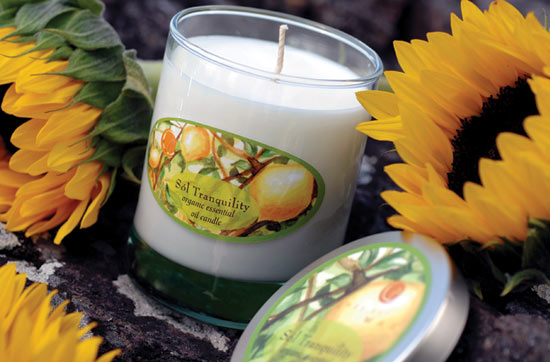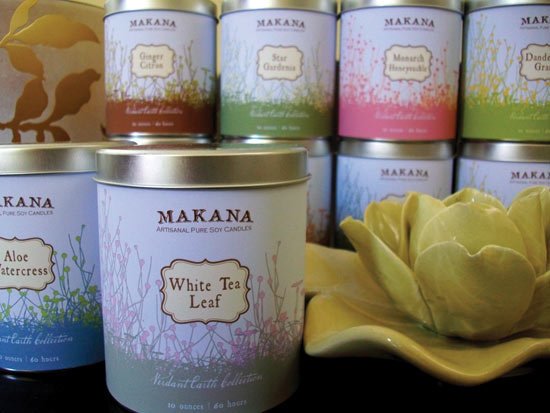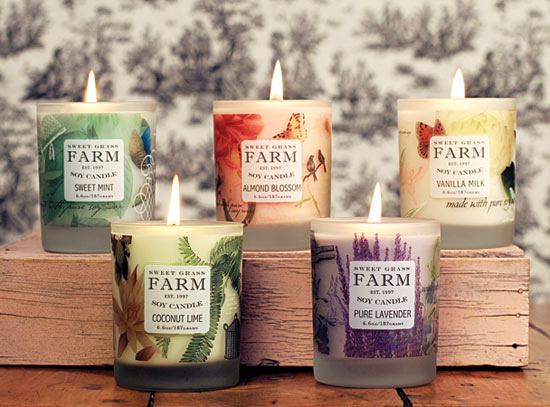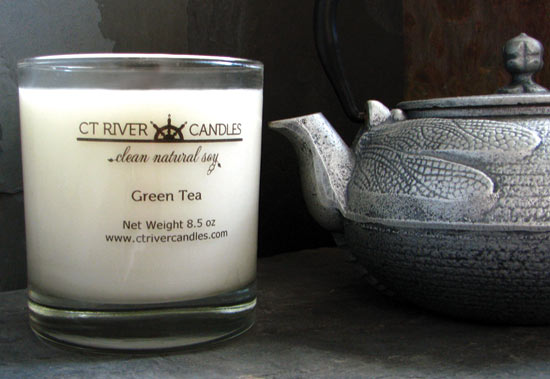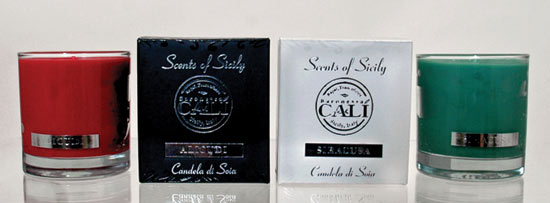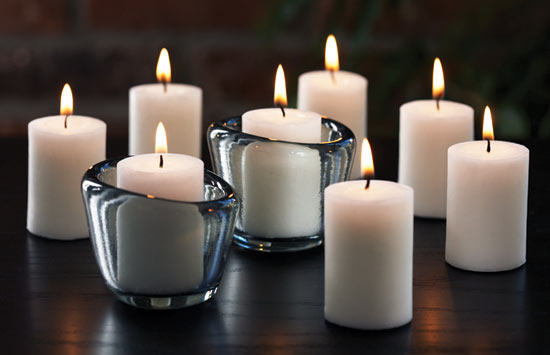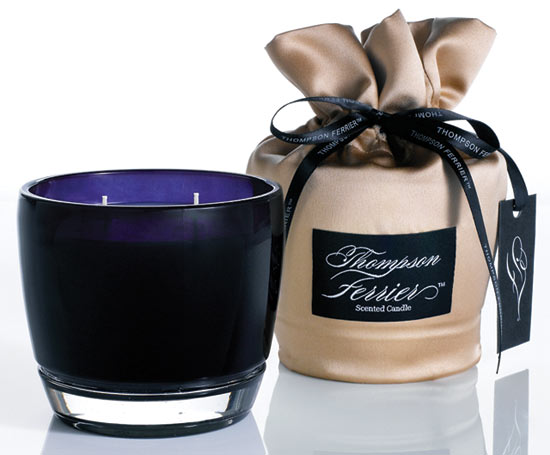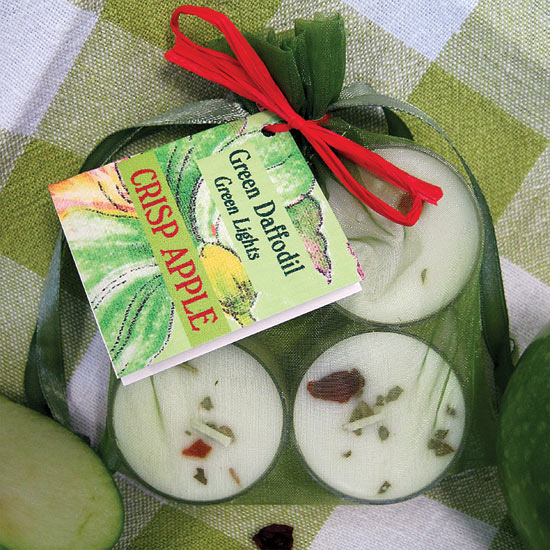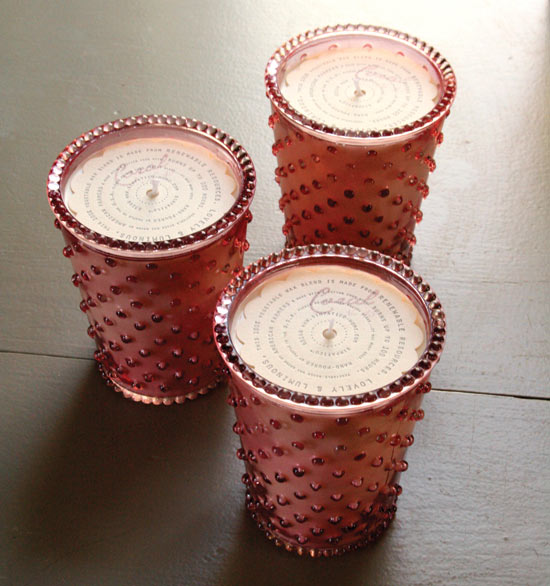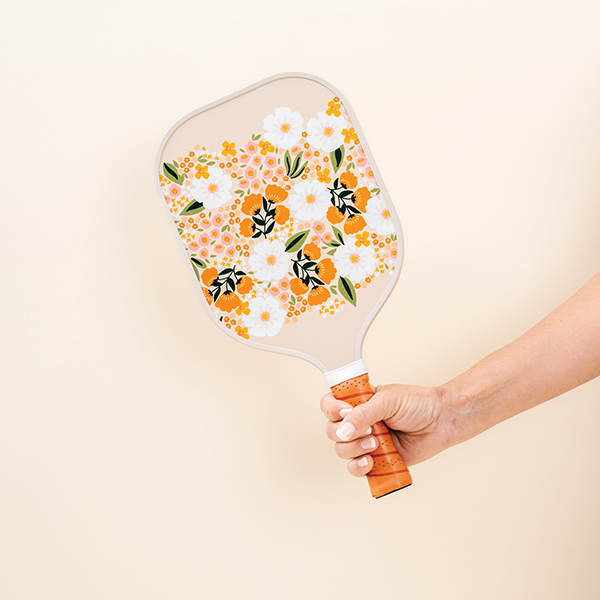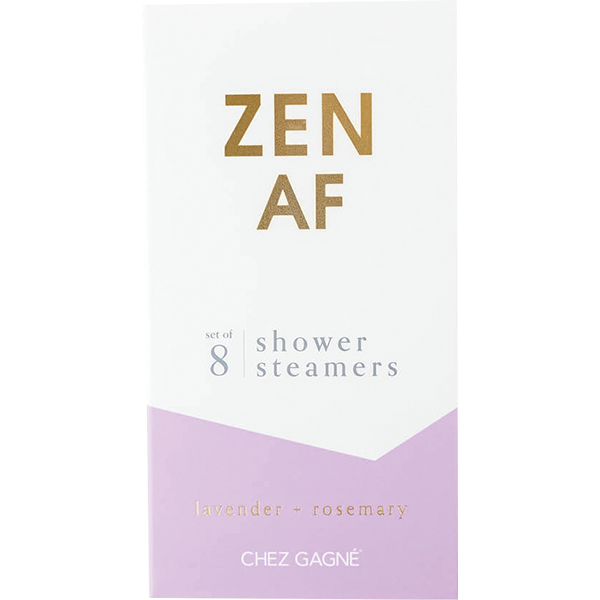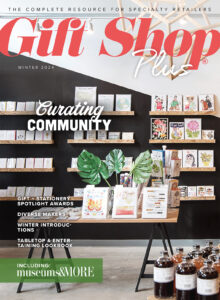Green Glow
New products and pricing ignite excitement for the green candle market’s profitable fourth quarter.
There’s no question that candles are a quick, inexpensive way to brighten a room—and a mood. And with the right product mix and a little education, eco-friendly candles can also translate into lots of green for earth-conscious retailers. Though the market has had to adapt like all others through the economic wildfires, manufacturers and retailers are as fired up as ever as they enter the all-important holiday season.
Though the National Candle Association reports the holidays spark 35 percent of annual candle sales, some vendors put that number closer to 60 percent. In response to this revenue opportunity, candle makers have developed new collections and added entry price-point products perfect for heating up gift and home entertainment expenditures.
And the industry could use a catalyst. Though it hasn’t been hit as hard as some consumer products, U.S. candle sales showed a modest uptick of 0.6 percent to $3.7 billion in overall sales, according to Mintel the Chicago-based market research firm. It anticipates the industry will continue to flicker in the uncertain economic winds in the years to come.
Barbara Miller, spokesperson for the NCA, is optimistic that candles sales won’t flame out. “Candles are [an] affordable luxury so people continue to buy them for their celebrations and enjoyment because it’s not a major out-of-pocket expense,” she says.
To kindle consumer spending in this area, the industry has adjusted pricing and introduced products that are more financially accessible. Jeffrey Light, president of Irvine, CA-based Aroma Naturals, notes that with low consumer confidence, candle makers were forced to make pricing adjustments. “Almost all candles over $100 are down to $85 to $75. Almost nobody is over $100 in the candle business now because it didn’t make any sense. Those that sold for $50 are now $35,” he says. “The whole top tier of the candle market is gone.”
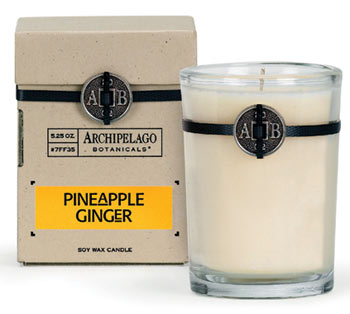 And with that shift, a new entry price point item is burning bright. Manufacturers report increased interest in tea lights, which provide customers with a guilt-free way to make a special purchase. “Tea lights are an aesthetic trend and a price point response,” says Anna Barrett, general manager of the Morrisville-VT based Way Out Wax brand. “At $3.99, [shoppers] can still buy a little treat and have a little ambiance but they don’t have to agonize over whether or not to spend $12 or $15 on a larger candle.”
And with that shift, a new entry price point item is burning bright. Manufacturers report increased interest in tea lights, which provide customers with a guilt-free way to make a special purchase. “Tea lights are an aesthetic trend and a price point response,” says Anna Barrett, general manager of the Morrisville-VT based Way Out Wax brand. “At $3.99, [shoppers] can still buy a little treat and have a little ambiance but they don’t have to agonize over whether or not to spend $12 or $15 on a larger candle.”
In an effort to entice consumers into buying more candles, many companies are also careful to position their products as an everyday essential—one to be used, depleted and replenished. “We find that people will have a cache [of candles] for when they have visitors, and they won’t use them everyday,” says Debbie Ludington, owner of Sweet Grass Farm of Greenland, NH. “Our products are priced to be everyday affordable so they can use them without burning a luxury item.”
Green light
 Ensuring customers go green for their next candle purchase means enlightening them to the relative advantages. “From a consumer standpoint, a candle is a candle. Consumers may not understand the difference. What they know is that in big boxes, candles are half the price, but if you turn them over, they’re made in China or Vietnam,” says Light, who uses a variety of waxes and butters, including soy and beeswax. “It’s incumbent on us to tell our story.”
Ensuring customers go green for their next candle purchase means enlightening them to the relative advantages. “From a consumer standpoint, a candle is a candle. Consumers may not understand the difference. What they know is that in big boxes, candles are half the price, but if you turn them over, they’re made in China or Vietnam,” says Light, who uses a variety of waxes and butters, including soy and beeswax. “It’s incumbent on us to tell our story.”
While the NCA maintains “no candle wax has ever been shown to be toxic or harmful to human health,” proponents of green practices and ingredients take a dim view on paraffin, the No. 1 candle wax on the market today. They are adamant in their stance that natural oils and waxes result in a better, safer product.
“Soy wax is non-toxic and burns cleaner than paraffin with no petro-carbon soot, which can blacken walls, ceilings and furniture; contaminate ventilation duct work in your home; as well as add toxic carcinogens into the air you breathe,” states Ieva Dexter, director of the Portland, OR-based Munio Candela brand, voicing the commonly held beliefs within the natural community about the advantages of vegetable waxes over paraffin. Munio also cites soy’s longer burn time as a benefit.
In addition to soy, which is the best selling vegetable wax in the United States, manufacturers report glowing results with hemp, palm, candelilla and beeswax, which is natural though not vegan. Way Out Wax, which primarily offers soy products, recently introduced hemp seed oil candles in its giftable line that’s higher-end and offers consumers extended candle life.And candle makers aren’t the only ones who have warmed to these renewable resources; customers have caught on as well. “Consumers are much more aware of what they’re putting into their bodies and home, which is forcing retailers to be more aware of what they purchase,” says Dan DeLeon, principal of the Mixture brand of Merriam, KS. Though Mixture has used a palm wax blend in the past to help stabilize its soy candles during summer months, it now offers 100-percent soy wax for maximum hot throw and a larger melt pool, which together ultimately mean more fragrance release.
Branda Tiffany, owner and creator of the Portland, OR-based Molly Muriel label has noticed that consumers have cooled on paraffin. “Years ago, I had to explain what soy wax was but now people recognize it and say it’s the only type of candle they buy,” she says, adding shoppers are still in the dark when it comes to some product elements though. “People don’t understand fragrances yet and why essential oils are so much better for them.”
For purists, essential oils, which are derived from plants, are the fragrances of choice. While some manufacturers boast 100-percent essential oils, others use mixtures to keep costs from burning a hole in consumers’ wallets and to help them produce a wider range of scents. And variety is key in a market where shoppers are so often led by their noses.
Both Mintel and the NCA agree that candles must pass the sniff test. In its 2010 candle report, Mintel found that 80 percent of purchasers are looking to eliminate odors and freshen the air. Similarly, three-quarters of respondents to an NCA survey indicated that fragrance is by far the most important factor driving their candle decisions.
But before customers ever get a chance to smell the product, they have to be attracted to its aesthetics. Because candles are often used as focal points in home décor, shoppers look for items that will strike a match with their existing color scheme. In order to keep in line with their green philosophies, however, many eco vendors find it challenging to produce a variety of hues. Some say soy wax, for instance, doesn’t produce consistent, even color without the use of additives. Therefore, many candles are offered in their natural wax colors, prompting manufacturers to become more creative when it comes to presentation.
 For instance, brightly colored silkscreens adorn the frosted tumblers in the new Sweet Grass Farm Meadow Collection, while Aroma Naturals’ new Bee-Soy-Happy line attracts customers with natural colors and honeycomb and beehive shapes. The Ferndale, MI-based Green Daffodil brand sprinkles herbs and spices into the wax to add interest and repurposes wine bottles as containers, giving each candle a unique color and shape and a bit of nostalgia.
For instance, brightly colored silkscreens adorn the frosted tumblers in the new Sweet Grass Farm Meadow Collection, while Aroma Naturals’ new Bee-Soy-Happy line attracts customers with natural colors and honeycomb and beehive shapes. The Ferndale, MI-based Green Daffodil brand sprinkles herbs and spices into the wax to add interest and repurposes wine bottles as containers, giving each candle a unique color and shape and a bit of nostalgia.
While some vendors take great pains to source the best renewable and natural colors and scent options, there is little regulation when it comes to labeling. Synthetic scent boosters, paraffin additives and plastic stabilizers could all be lurking in a candle claiming to be soy. As a result, consumers are left on their own to try to smoke out the false claims. “Candles are the wild west and people take liberty, for instance saying ‘made with essential oils’ when they’re cutting it with synthetic fragrances and dyes,” Barrett says.
This sometimes murky labeling extends to the suppliers themselves. “I have not been able to find certified organic wax. There are people making claims for organic wax but if everything in the chain isn’t organic, you can’t call it organic,” Light says, adding that using his background in the natural food market, he’s helping to establish similar regulations for candles.
Packing it in
While renewable ingredients are important, true connoisseurs of earth-conscious goods become enflamed when otherwise green companies use wasteful containers, packaging and shipping methods. “We have a pretty strict set of guidelines for our product. I make sure that if I order a new candle line and the candle fits all of our criteria that it’s also not going to come in Styrofoam packing peanuts with each candle wrapped in a plastic bag,” says Kelsey Carlson, owner of Green Nest, an eco-friendly gift store in Culpeper, VA, which offers five candle lines. “Our products are green but so are our practices, and we try to make sure all of our manufacturers carry those practices through.”
 Elyce Rembos, owner of two Chicago-area The Green Goddess Boutiques, which stock five to 10 candle brands in the $20 to $55 price range, notices a disparity in how the products are packed. “The bigger companies definitely aren’t as good about [using eco packaging] whereas smaller companies are more aware,” she says. But while going minimalist might seem like the best green solution, Rembos is quick to show support for packaging with a purpose. “Packaging drives people to the candles. And because they’re gift items, customers do want to have that beautiful box,”
Elyce Rembos, owner of two Chicago-area The Green Goddess Boutiques, which stock five to 10 candle brands in the $20 to $55 price range, notices a disparity in how the products are packed. “The bigger companies definitely aren’t as good about [using eco packaging] whereas smaller companies are more aware,” she says. But while going minimalist might seem like the best green solution, Rembos is quick to show support for packaging with a purpose. “Packaging drives people to the candles. And because they’re gift items, customers do want to have that beautiful box,”
For Tiffany of Molly Muriel, the lack of packaging associated with her line has been a point of pride, but it has also held her back from getting into more shops. Currently, she uses recycled glass containers for her candles, which use soy wax and essential oils. A simple tag connected to an extra-long wick delivers her brand message and safety information. While that collection has been well received because of the unique containers, it makes it difficult for retailers to order. So in August she launched a new line that uses uniform, square glass containers and is sold in recycled, postconsumer boxes.
Similarly, Way Out Wax has yielded to retailers’ requests for boxed items. Until recently, the company’s container candles, which come in reusable glass tumblers, were offered without boxes. Then it added tea lights in boxed sets and its Green Moon Aromatics collection. The bonus? “We now have more space to tell our story,” states Barrett, who is quick to add that all Way Out Wax ensures all of its packaging has a completely green pedigree.
Sales sizzle
 When it comes to stoking sales in stores, vendors and retailers agree, scent sells. “If I burn the candles, that’s what sells them,” says Carlson of Green Nest. “Especially in a store as big as mine, if they can walk in and smell them right away, they say, ‘that’s the kind of candle I want for my house.'”
When it comes to stoking sales in stores, vendors and retailers agree, scent sells. “If I burn the candles, that’s what sells them,” says Carlson of Green Nest. “Especially in a store as big as mine, if they can walk in and smell them right away, they say, ‘that’s the kind of candle I want for my house.'”
Though the products’ aromatic properties are a sure sales trigger, shoppers can also be enticed through other senses. DeLeon of Mixture believes in the power of color-coordinated vignettes and themed settings to awaken consumers’ imaginations and spur their willingness to recreate the look at home. “In the age of big-box stores, consumers want ideas for what can be done with products,” he says.
While some stores have success with special candle sections or green groupings, Barrett thinks sprinkling them throughout the store increases the likelihood that customers will interact with the product. “Merchandise candles in a couple of different spots, not just in a candle section,” Barrett suggests. “Give the customers an opportunity to run across them.”
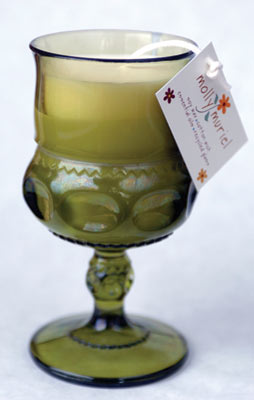 And when they do encounter them, be prepared to extol their virtues, says Dexter of Munio Candela. She counsels shop owners looking to increase sales of her brand to “know the story behind the product and its selection of materials.”
And when they do encounter them, be prepared to extol their virtues, says Dexter of Munio Candela. She counsels shop owners looking to increase sales of her brand to “know the story behind the product and its selection of materials.”
Green Daffodil owners Siouxsan Miller and Anne Simonetti believe consumers are hungry for this type of insider information, which is why they provide their wholesale accounts with their pictures and bios. The pair also run a store by the same name where they post similar info on the local artisans they stock. “Shoppers like the idea of regional goods, supporting the local economy and knowing who’s making the products,” Simonetti says.
As a retailer, Carlson is happy to soak up as much information as she can. She does extensive research on each brand she brings in and educates her employees as well. “That’s one reason my customers come back,” she says. “We know our products.”
Barrett credits shop owners like Carlson for fueling consumer interest. “Retailers have taken it upon themselves to be more educated,” she says. “The end consumer is the least informed so you need a passionate retailer in the middle.”
Caletha Crawford is a veteran journalist, who writes about the retail landscape, consumer behavior and consumer products. Through her role as part-time faculty at Parsons The New School for Design, she equips emerging fashion designers with the tools needed to launch successful businesses. Scented candles are a favorite gift for her to give and receive.
Mouse over images below to view.
